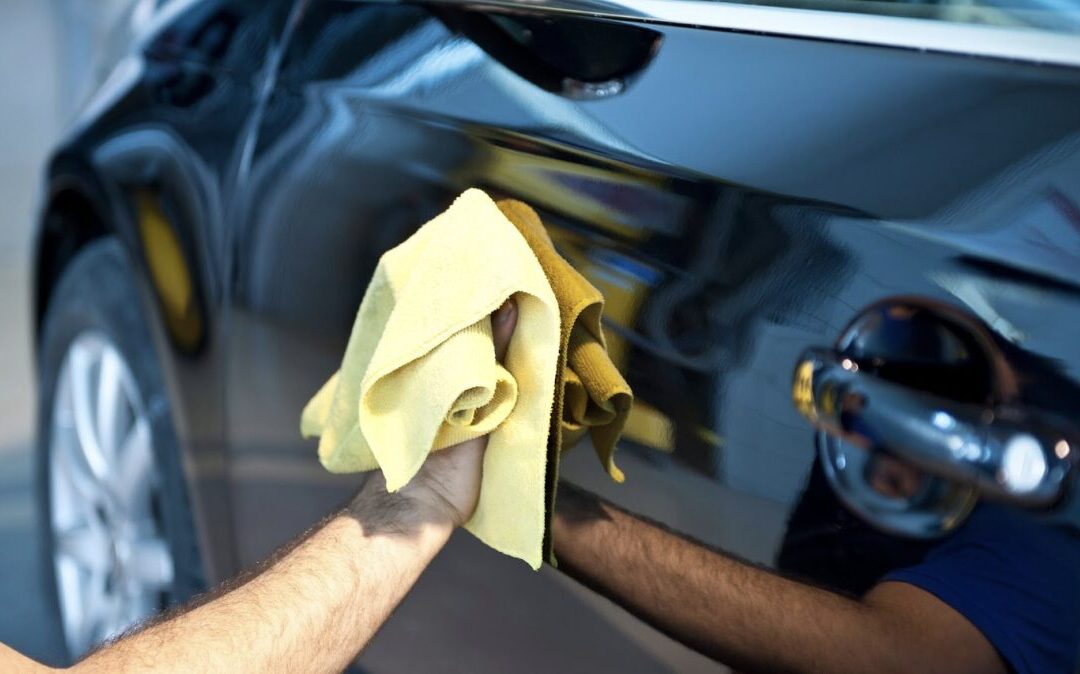Custom vehicle wraps are an excellent way to promote your business, attract attention, and create a lasting impression as you drive through your local community. Whether you’ve invested in a full vehicle wrap or a partial wrap, the key to getting the most out of your investment is proper maintenance and care. Vehicle wraps are designed to be durable, but without the right care, they can fade, peel, or deteriorate over time. To keep your wrap vibrant and long-lasting, it’s essential to follow a regular maintenance routine.
In this blog, we’ll cover the best practices for maintaining and caring for your custom vehicle wraps. From washing techniques to environmental factors, we’ll ensure you have all the information you need to extend the life of your wrap and keep it looking sharp.
Why Maintenance Matters for Vehicle Wraps
Vehicle wraps are designed to be tough and weather-resistant, but like any other exterior surface, they are exposed to environmental factors that can wear them down over time. UV rays, dirt, pollution, and even tree sap can take a toll on the appearance of your wrap. Regular maintenance not only keeps your vehicle wrap looking clean and professional, but it also helps protect your investment and extends the lifespan of the vinyl material.
Properly maintained vehicle wraps can last between five to seven years or even longer, depending on the quality of the material and the conditions to which they are exposed. Neglecting maintenance, however, can lead to premature fading, peeling, and bubbling, ultimately diminishing the impact of your advertising efforts.
How to Wash Your Vehicle Wrap
One of the most important aspects of caring for your vehicle wrap is regular washing. A clean vehicle wrap looks more vibrant, and keeping it free from dirt and grime helps prevent the buildup of contaminants that can cause damage over time. However, it’s important to wash your vehicle wrap using the correct methods to avoid scratching or damaging the vinyl.
Hand Washing: The Best Option
Hand washing is the safest and most effective way to clean your vehicle wrap. Here’s a step-by-step guide to properly washing your wrapped vehicle:
- Gather Your Supplies: Use a soft sponge or microfiber cloth, a bucket of water, and a mild detergent (non-abrasive and without harsh chemicals like ammonia or solvents). Avoid using brushes or abrasive materials that could scratch the vinyl.
- Pre-Rinse the Vehicle: Use a hose to rinse off any loose dirt, dust, or debris from the surface of the vehicle. This helps prevent scratches when you begin scrubbing.
- Wash with Soap and Water: Dip the sponge or cloth into the soapy water and gently wash the vehicle’s surface in sections. Make sure to clean the entire wrap, paying extra attention to areas where dirt may accumulate, such as around the wheel wells and bumpers.
- Rinse Thoroughly: Once you’ve washed the vehicle, rinse it thoroughly with water to remove all soap residue.
- Dry with a Microfiber Cloth: Use a soft microfiber cloth to gently dry the vehicle. Avoid air-drying the wrap, as water spots can form and diminish the overall appearance.
Pressure Washing: Use with Caution
While hand washing is recommended, pressure washing can be used sparingly if done with care. If you choose to use a pressure washer, follow these guidelines to prevent damage to the wrap:
- Keep the water pressure below 2,000 psi.
- Use a wide-angle nozzle (40-degree nozzle or higher) to reduce pressure.
- Hold the nozzle at least 12-18 inches away from the surface of the vehicle.
- Spray at an angle rather than directly at the edges of the wrap to avoid lifting or peeling the vinyl.
Pressure washing is not recommended for regular use and should only be done occasionally if hand washing is not feasible. Excessive use of pressure washing can weaken the adhesive and cause the wrap to lift.
Protecting Your Vehicle Wrap from Environmental Factors
Environmental factors, such as UV rays, pollution, bird droppings, and tree sap, can all affect the longevity and appearance of your vehicle wrap. Taking steps to protect your wrap from these elements is essential to keeping it vibrant and in good condition.
Avoid Prolonged Sun Exposure
One of the biggest threats to vehicle wraps is UV exposure. Constant exposure to direct sunlight can cause the colors to fade over time, especially if your vehicle is parked outside for extended periods. Here’s how to minimize UV damage:
- Park in the Shade: Whenever possible, park your vehicle in a garage, carport, or shaded area to protect it from direct sunlight.
- Use a Car Cover: If you don’t have access to covered parking, consider using a car cover to shield your vehicle from the sun’s rays. This can prevent fading and extend the life of your wrap.
Remove Contaminants Quickly
Certain contaminants, such as bird droppings, tree sap, and bug splatter, can be corrosive and cause permanent damage to your vehicle wrap if left untreated. The key is to remove these contaminants as soon as possible to prevent them from bonding to the vinyl. Here’s what you should do:
- Use a Soft Cloth and Soapy Water: Gently wipe away contaminants with a soft cloth and mild soapy water. Avoid scrubbing too hard, as this can damage the vinyl.
- Isopropyl Alcohol for Stubborn Spots: For more stubborn spots like tree sap, you can use a solution of isopropyl alcohol (70%) on a clean cloth to gently remove the substance. Be sure to rinse the area with water afterward to avoid leaving any residue.
- Avoid Harsh Chemicals: Never use abrasive cleaners, bleach, or solvent-based chemicals on your vehicle wrap, as these can damage the vinyl and cause discoloration.
Keep Your Vehicle Covered in Extreme Weather
If you live in an area with extreme weather conditions—such as intense heat, heavy rain, or snow—it’s important to take extra precautions to protect your vehicle wrap. Here are a few tips:
- Use a Carport or Garage: Store your vehicle in a sheltered area during extreme weather to prevent prolonged exposure to harsh conditions.
- Apply Wax or Sealant: Although most vinyl wraps are designed to be weather-resistant, applying a protective wax or sealant (specifically designed for wraps) can add an extra layer of protection against the elements.
- Avoid Using Ice Scrapers: In snowy or icy conditions, avoid using ice scrapers on windows with vinyl wraps. Ice scrapers can tear the vinyl, especially on perforated window wraps.
Handling Minor Damage and Repairs
Despite your best efforts, minor damage to your vehicle wrap—such as scratches, tears, or peeling edges—can still occur. The good news is that many of these issues can be repaired without needing a full wrap replacement.
Dealing with Peeling Edges
If the edges of your vehicle wrap start to peel or lift, it’s important to address the issue promptly. Use your fingers to gently press the lifted area back into place. If the adhesive is no longer sticky, you can apply a small amount of 3M Edge Sealer or a similar product to secure the edges. This will help prevent further peeling and ensure the wrap stays intact.
Repairing Scratches and Tears
Minor scratches and small tears in your vehicle wrap can often be repaired without replacing the entire wrap. Here’s how:
- Clean the Area: Clean the damaged area with a soft cloth and soapy water to remove any dirt or debris.
- Use Vinyl Repair Kits: Vinyl repair kits are available for fixing small scratches or tears. These kits often come with adhesive patches or vinyl glue that can be applied to the damaged area.
- Consult a Professional: For larger or more noticeable damage, it’s best to consult a professional vehicle wrap installer. They can patch or replace sections of the wrap to restore its appearance without rewrapping the entire vehicle.
Maintaining Perforated Window Graphics
If your vehicle wrap includes perforated window graphics, there are a few additional care steps to keep in mind. These graphics allow visibility from inside the vehicle while displaying a full design on the outside, but they require special attention to keep them looking their best.
- Avoid Using Window Defrosters: Perforated window graphics can be sensitive to high heat, so avoid using window defrosters directly on wrapped windows for extended periods.
- Don’t Use Window Scrapers: As mentioned earlier, avoid using ice scrapers on wrapped windows, as they can damage the perforated vinyl.
- Clean Gently: When washing windows with perforated graphics, use a soft cloth and mild detergent, being careful not to scrub too hard or catch the edges of the vinyl.
The Benefits of Professional Wrap Care Services
While regular maintenance can be done at home, it’s a good idea to schedule professional wrap care services periodically. Professional installers can perform a thorough cleaning, inspect your wrap for any damage, and make repairs as needed. This level of care helps ensure that your vehicle wrap remains in top condition for as long as possible.
Conclusion
Caring for your custom vehicle wrap doesn’t have to be complicated, but it does require regular attention to ensure it stays vibrant and long-lasting. By following the steps outlined in this guide—hand washing regularly, protecting the wrap from environmental factors, and addressing minor damage quickly—you can keep your vehicle wrap looking professional and attractive for years.
At TNT Signs and Graphics, we specialize in creating high-quality vehicle wraps that are built to last. If you have any questions about maintaining your vehicle wrap or need professional care services, don’t hesitate to contact us. With proper care, your custom vehicle wrap will continue to promote your business and turn heads on the road!

